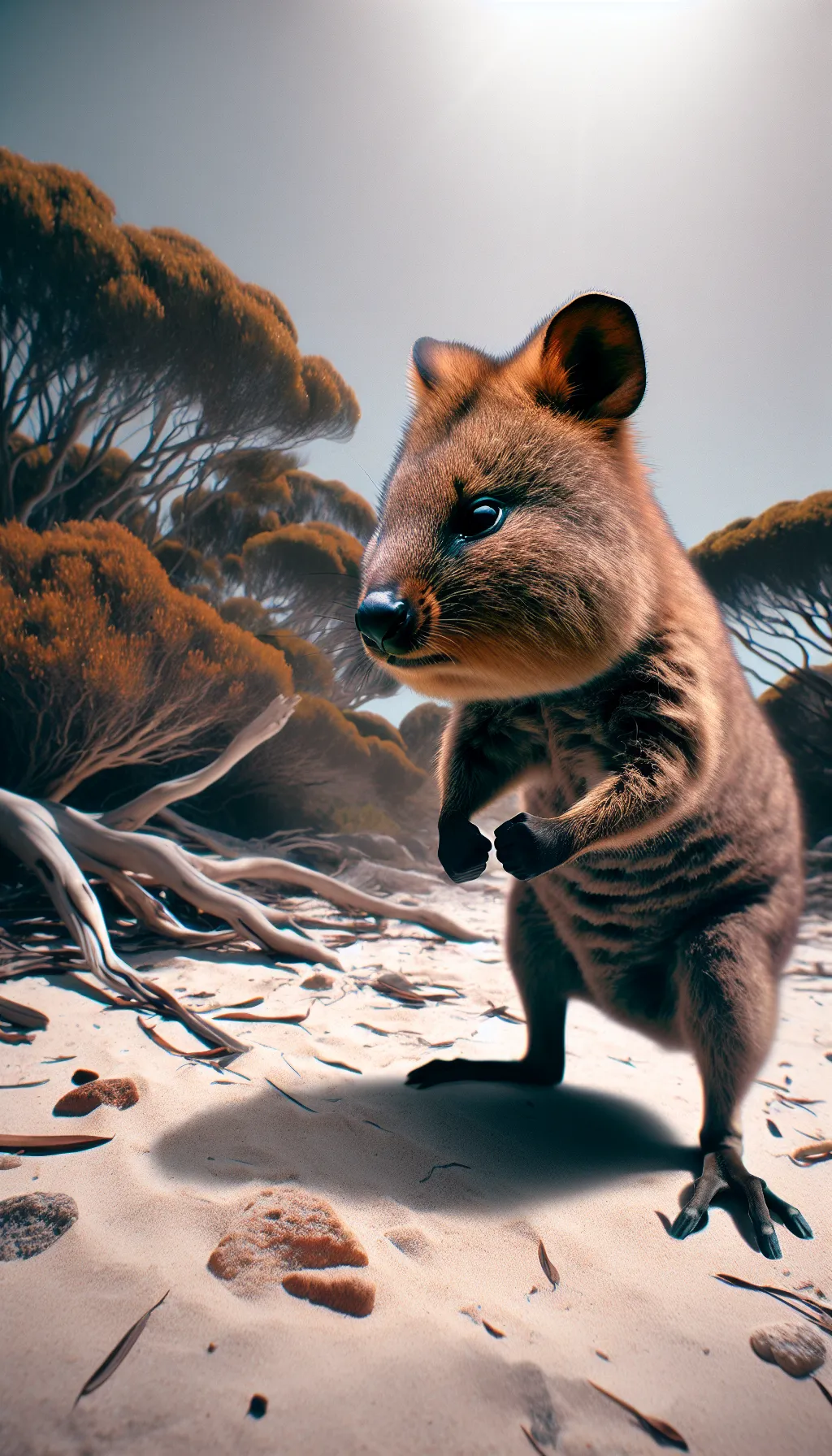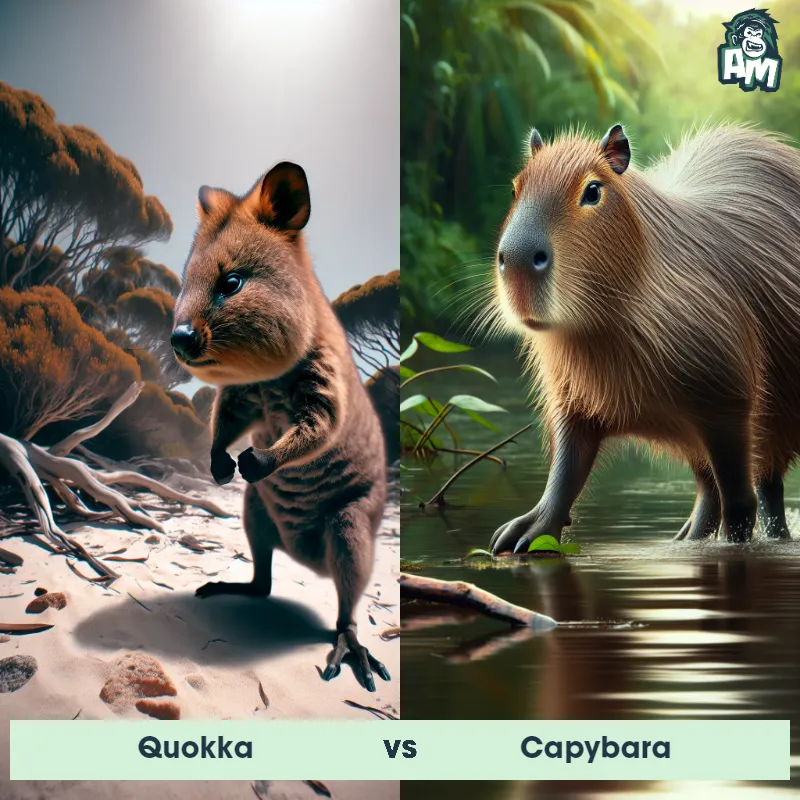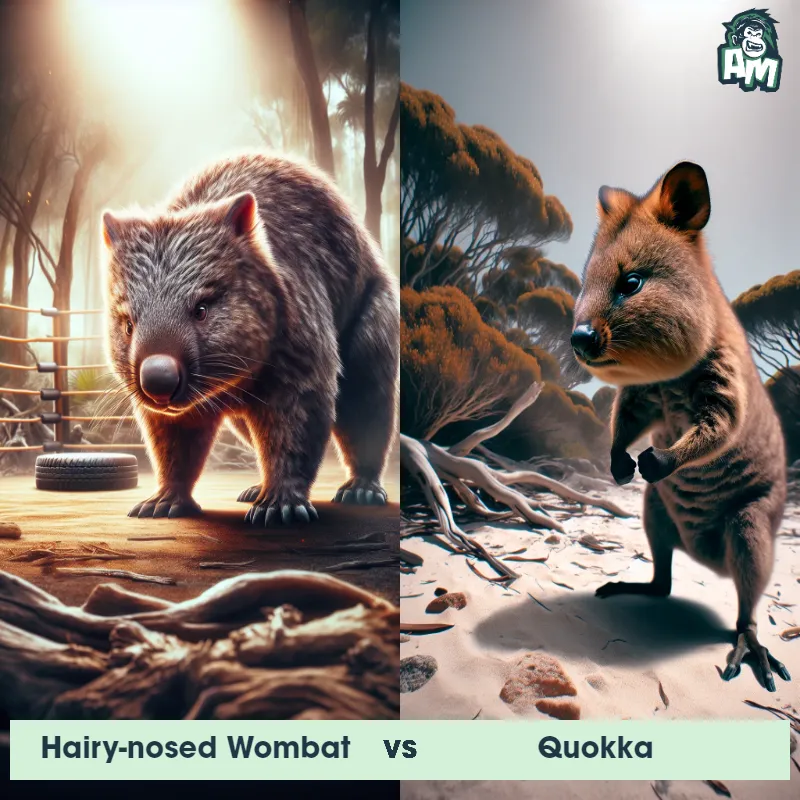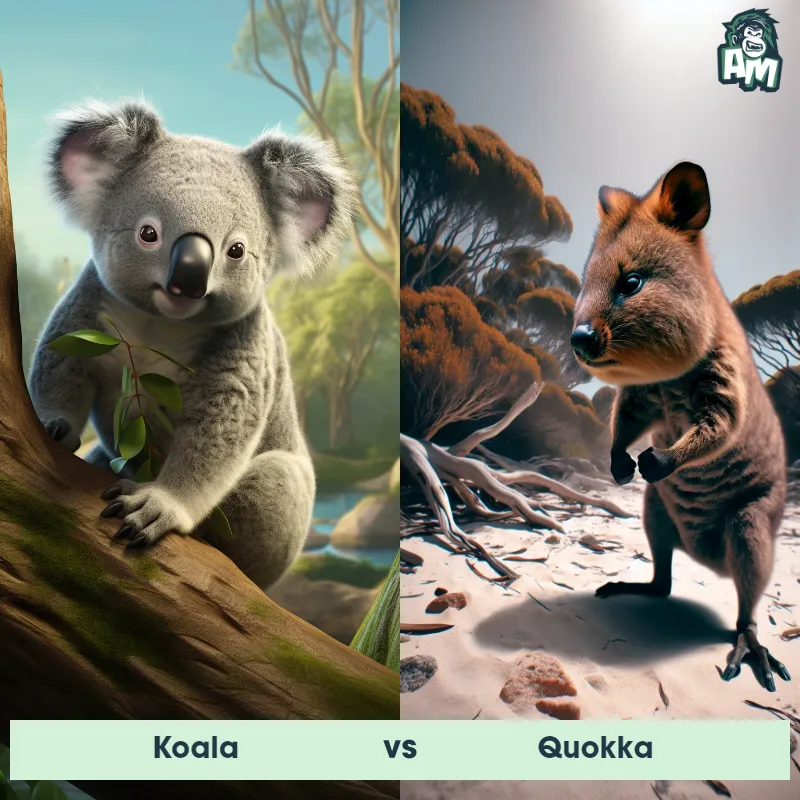The Quokka
Quokkas, also known as the world's happiest animal, are small marsupials that are native to the islands of Rottnest and Bald in Western Australia. They are about the size of a domestic cat and have a rounded body shape with short legs. Quokkas have a stocky build, a short tail, and a flat face with a small, black nose, round black eyes, and round ears. They have a light brown to sandy brown fur on their upper body, while their underbody is creamy white. Quokkas are known for their friendly and cheerful demeanor, often displaying a wide smile due to the shape of their mouths, which is why they are often described as the happiest animal on Earth.

| Quokka | |
|---|---|
| Size | Around 45-54 cm (17-21 inches) in length |
| Weight | 2.5-5 kilograms (5.5-11 pounds) |
| Speed | 6.2mph (10km/h) |
| Key Strength | Agile and quick movements |
| Biggest Weakness | Relatively small size and non-aggressive nature |
| Scientific Name | Setonix brachyurus |
| Family | Macropodidae |
| Habitat | Coastal scrubs, forests, and heathlands |
| Geography | Southwest part of Western Australia, specifically Rottnest Island and a few regions on the mainland |
| Diet | Herbivorous - feeds on grasses, leaves, bark, and fruits |
| Lifespan | 2 years - 10 years |

The Quokka
Quokkas, also known as the world's happiest animal, are small marsupials that are native to the islands of Rottnest and Bald in Western Australia. They are about the size of a domestic cat and have a rounded body shape with short legs. Quokkas have a stocky build, a short tail, and a flat face with a small, black nose, round black eyes, and round ears. They have a light brown to sandy brown fur on their upper body, while their underbody is creamy white. Quokkas are known for their friendly and cheerful demeanor, often displaying a wide smile due to the shape of their mouths, which is why they are often described as the happiest animal on Earth.
Fun Fact: Quokkas have the ability to climb trees and shrubs, despite their short legs, thanks to their sharp claws and strong hind limbs.
| Quokka | |
|---|---|
| Size | Around 45-54 cm (17-21 inches) in length |
| Weight | 2.5-5 kilograms (5.5-11 pounds) |
| Speed | 6.2mph (10km/h) |
| Key Strength | Agile and quick movements |
| Biggest Weakness | Relatively small size and non-aggressive nature |
| Scientific Name | Setonix brachyurus |
| Family | Macropodidae |
| Habitat | Coastal scrubs, forests, and heathlands |
| Geography | Southwest part of Western Australia, specifically Rottnest Island and a few regions on the mainland |
| Diet | Herbivorous - feeds on grasses, leaves, bark, and fruits |
| Lifespan | 2 years - 10 years |
Quokka Matchups
We use AI to simulate matchups between the Quokka and other animals. Our simulation considers size, strength, and natural predatory behaviors to determine the most likely outcome.

Can't find the Matchup you want?
Create Your Own MatchupQuokka: Diet, Predators, Aggression, and Defensive Behaviors
What do Quokkas eat?
Quokkas are herbivores, primarily feeding on a diet of grasses, leaves, stems, and succulent plants. They may also consume fruits and nuts when available, making them opportunistic feeders. Their diet is largely dependent on the vegetation found in their habitat on small islands off the coast of Western Australia.
Do Quokkas have any predators?
Quokkas are mainly preyed upon by introduced predators such as foxes and feral cats, which have posed a significant threat to their population. However, due to their docile nature and lack of fear towards humans, they have also fallen victim to dogs and human activities such as habitat destruction and vehicle collisions.
Are Quokkas aggressive?
Quokkas are known for their friendly and sociable disposition, making them approachable to tourists and locals alike. They are not inherently aggressive towards humans or other animals, but they may exhibit defensive behaviors when threatened or cornered. Generally, they prefer to retreat or flee rather than engage in aggression.
Do Quokkas fight?
Quokkas are not known to engage in physical fights with other animals or members of their own species. They rely on their agility and speed to evade predators and avoid conflicts whenever possible. However, in some rare cases of competition for resources or territory, they may display aggressive posturing such as boxing with their forearms.
How do Quokkas defend themselves?
When facing a threat, Quokkas will rely on their ability to escape quickly by hopping away or seeking refuge in dense vegetation. They may also vocalize with a low growl or hiss as a warning signal to deter potential predators. Their small size and agility allow them to maneuver through tight spaces and evade capture effectively.
What is Quokkas' biggest weakness in a fight?
Despite their agility and speed, Quokkas' lack of physical strength and defensive mechanisms make them vulnerable in confrontations with larger predators or aggressive animals. Their natural inclination to flee rather than fight can put them at a disadvantage when forced to defend themselves, especially against formidable threats.
Fun Fact: Quokkas are primarily herbivorous, feeding on a variety of vegetation including grasses, leaves, stems, and bark, but they can also eat small amounts of fruit.
Fun Fact: Quokkas have a unique reproductive adaptation known as embryonic diapause, which allows them to pause the development of their embryos until the previous young has left its pouch, ensuring that they always have enough resources to raise their offspring.















